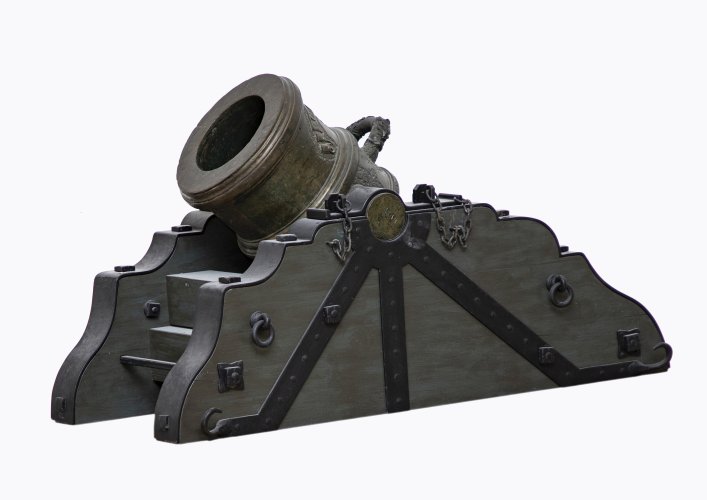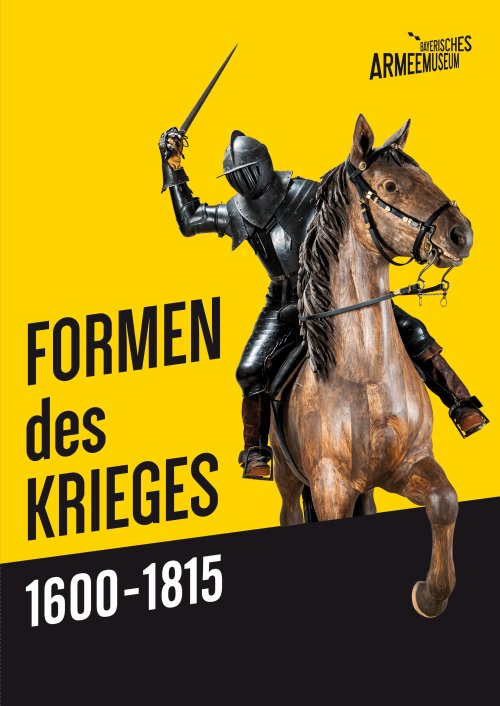Forms of War 1600-1815

 The first section of the new permanent exhibition of the Bavarian Army Museum depicts the forms of war in the period from about 1600 to 1815. It is housed in the New Castle in Ingolstadt, a splendid Gothic building built in the 15th century for the Bavarian dukes.
The first section of the new permanent exhibition of the Bavarian Army Museum depicts the forms of war in the period from about 1600 to 1815. It is housed in the New Castle in Ingolstadt, a splendid Gothic building built in the 15th century for the Bavarian dukes.
The Battle
Large battles, which were at the very heart of the war, are presented on the upper floor, in the former ballroom of the castle. The opposing troops would meet on an open field and within a few hours the battlefield was littered with dead or wounded soldiers, often thousands of them. The distances at which the projectiles of the muskets and cannons could hit their targets were short. The combatants stood face to face. Again and again there was close combat with cutting and thrust- weapons. The cavalry was particularly terrifying. With firearms becoming more and more numerous and effective, tactics had to be adapted. The strict discipline with which the foot soldiers marched into battle at that time is hard to imagine today.
The exhibition puts the weapons and equipment of the warriors on display, thereby making the combat very vivid. But it also depicts the wounds and hardships. The bones found in a mass grave from the Battle of Alerheim (1645) bear visible testimony to the lives, sufferings and deaths of those soldiers.
Siege Warfare
 Fortresses played a decisive role in almost all European wars of that time. Indeed, there were considerably more sieges than battles. Fortified towns were the most highly contested possessions. Against the increasingly complex fortifications with their bastions, ramparts and trenches, a systematic technique of assault was developed around 1670, making use of approach trenches and gun batteries. The preparations for and the conduct of a siege were marked by an enormous mobilization of people and materials. At the centre of the room is the unique planning model of the Fortress of Ingolstadt (around 1570).
Fortresses played a decisive role in almost all European wars of that time. Indeed, there were considerably more sieges than battles. Fortified towns were the most highly contested possessions. Against the increasingly complex fortifications with their bastions, ramparts and trenches, a systematic technique of assault was developed around 1670, making use of approach trenches and gun batteries. The preparations for and the conduct of a siege were marked by an enormous mobilization of people and materials. At the centre of the room is the unique planning model of the Fortress of Ingolstadt (around 1570).
Some of the most important architects of that time were involved with fortifications. But all these plans and elaborate drawings must not obscure the fact that siege warfare was just as cruel and destructive as the other forms of war. Artefacts from a large excavation on the site just north of the New Castle shine some extra light on the hard work of the fortress labourers. An original wheelbarrow from 1537 can be seen opposite the fortress model.
The "Little War"
 The everyday experience of war did not consist solely of great battles and sieges. Marches and bivouacs were often much more stressful. Added to this was the plundering of the land, which made war possible in the first place. The armies were constantly on the move to feed themselves or to impede the enemy‘s supply. The contemporaries called this the “little war”. It was the civilian population, who were being robbed and terrorised, that suffered the most from it. For them, it did not make much of a difference whether it was enemy soldiers or those of their own sovereign. Furthermore, armed marauders also frequently went on the prowl, on their own, in times of war. In the centre of the room there are two helmets of soldiers who were slain while looting.
The everyday experience of war did not consist solely of great battles and sieges. Marches and bivouacs were often much more stressful. Added to this was the plundering of the land, which made war possible in the first place. The armies were constantly on the move to feed themselves or to impede the enemy‘s supply. The contemporaries called this the “little war”. It was the civilian population, who were being robbed and terrorised, that suffered the most from it. For them, it did not make much of a difference whether it was enemy soldiers or those of their own sovereign. Furthermore, armed marauders also frequently went on the prowl, on their own, in times of war. In the centre of the room there are two helmets of soldiers who were slain while looting.
Catalogue

 Here you can download the whole catalogue as PDF for free (ca. 12 MB).
Here you can download the whole catalogue as PDF for free (ca. 12 MB).
It contains all objects of the exhibition areas "The Battle", "Sieges" and "The Small War".
It is available at bookstores and in the shop of the museum for 15 €.
The German version of the catalogue can be downloaded here (ca. 12 MB).
Forms of War 1600-1815
(Catalogues of the Bavarian Army Museum Vol. 19)
Tobias Schönauer and Daniel Hohrath
Neustadt an der Aisch 2019, 248 pages, numerous illustrations, hard cover
ISBN 978-3-96049-079-1



